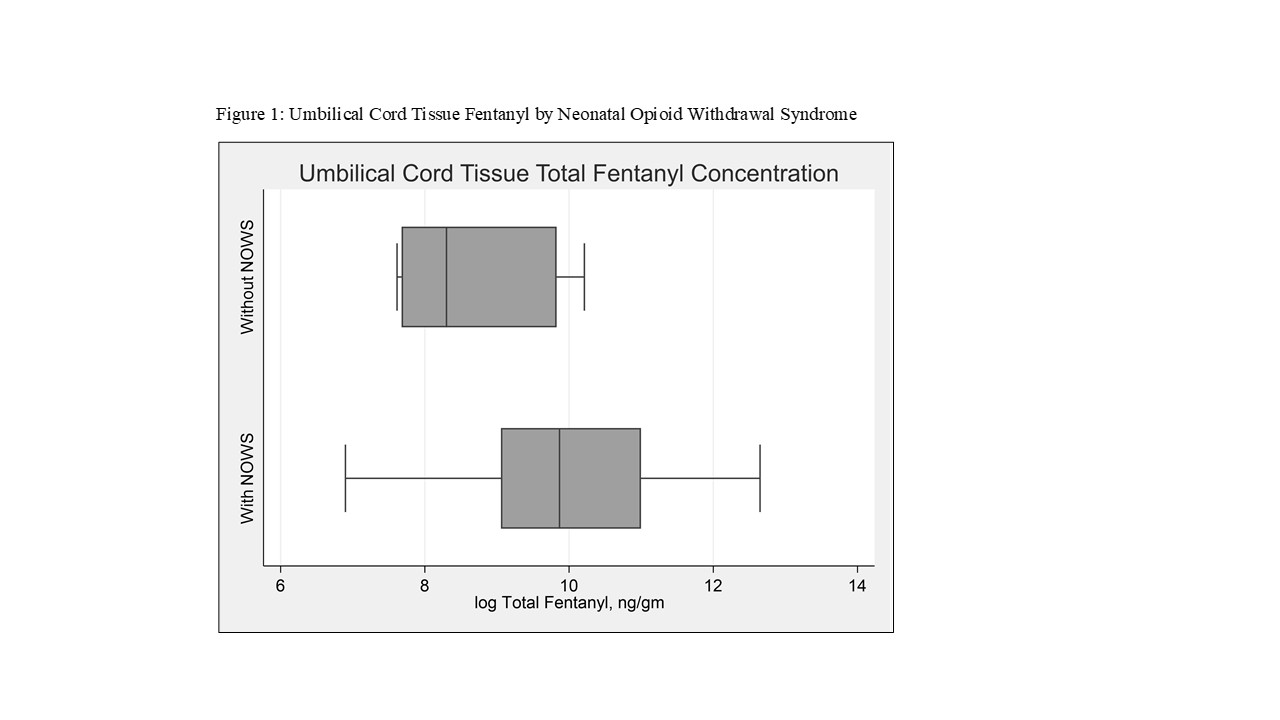Neonatal Neurology: Clinical Research
Neonatal Neurology 1: Clinical 1
154 - Intrauterine Exposure to Fentanyl: A Significant Emerging Risk for Neonatal Opioid Withdrawal Syndrome (NOWS)
Publication Number: 154.135
- DR
Divya Rana, MD
Associate Professor
University of Tennessee Health Science Center College of Medicine
University of Tennessee Health Science Center
Memphis, Tennessee, United States
Presenting Author(s)
Background:
Illicit fentanyl exposure has emerged as a significant etiology of all opioid overdose deaths in the US, with a six-fold increase from 2015 to 2020. Maternal abuse of fentanyl is a major concern but current data is sparse on this emerging issue. We are presenting our single center, regional perinatal data reflecting the rise of fentanyl as opioid of abuse among pregnant women.
Objective: To assess the risk of neonatal opioid withdrawal syndrome (NOWS) with prenatal illicit fentanyl exposure.
Design/Methods: This is a case-control study of neonates born to mothers with evidence of perinatal opioid abuse from January 2020 to April 2021. Maternal substance abuse was confirmed with a positive urine toxicology and/or umbilical cord toxicology (UCT) testing. Infant and maternal demographics, enrollment in opioid maintenance program (OMP) were recorded. We defined severe NOWS as a need for pharmacological treatment and a Mild/no NOWS without such treatment. Logistic regression model was used to identify risk factors for NOWS with fentanyl. A p-value ≤ 0.05 was considered statistically significant. All analyses were conducted in STATA® version 17.0.
Results:
A total of 103 infants with mean gestational age (GA) of 36±4 weeks and birth weight (BW) of 2582±786 gram were included. During study period, 29% [30/103] toxicology testing were positive for fentanyl. Among fentanyl exposed versus non-exposed, BW and GA were comparable, table 2. However, fentanyl-exposed group had a higher odds of preterm births at < 37 weeks, OR1.9(CI 95% [0.75, 5.04], p </em>= 0.1. Infants with prenatal fentanyl exposure had a significant risk for severe withdrawal with OR 4.2 CI 95% [1.6, 11.9], p = 0.001; and a longer hospital stay, p< 0.01. The Umbilical cord tissue was examined in 82 samples, with a higher total fentanyl level (ng/gm) in infants with severe NOWS, p=.02: Figure1.Using logistic regression, maternal fentanyl abuse remained significant risk for NOWS OR 6.5 CI 95% [1.4, 30.6], p =0.02, even after controlling for other substances of abuse, GA also increased the likelihood of treatment for severe NOWS OR 2.1CI95% [1.5, 2.9,] p < 0.01. Enrollment in OMP did not change this risk OR2.1 CI 95%[ 0.58, 7.28], p = 0.26.
Conclusion(s): There is a significant risk for severe NOWS with prenatal illicit fentanyl abuse.
.jpg)
.jpg)
